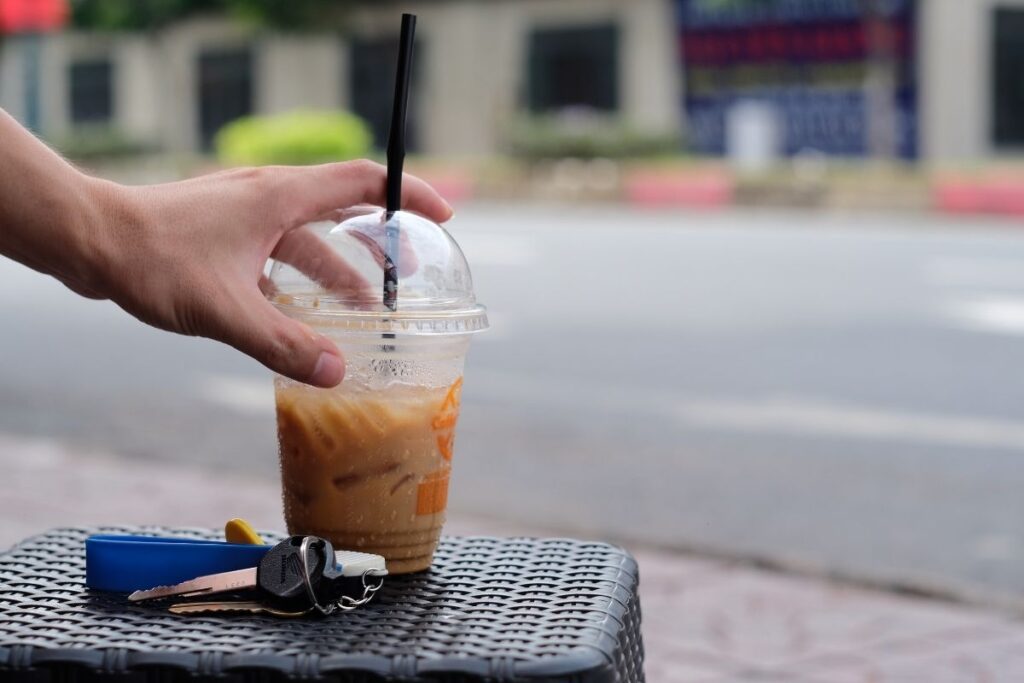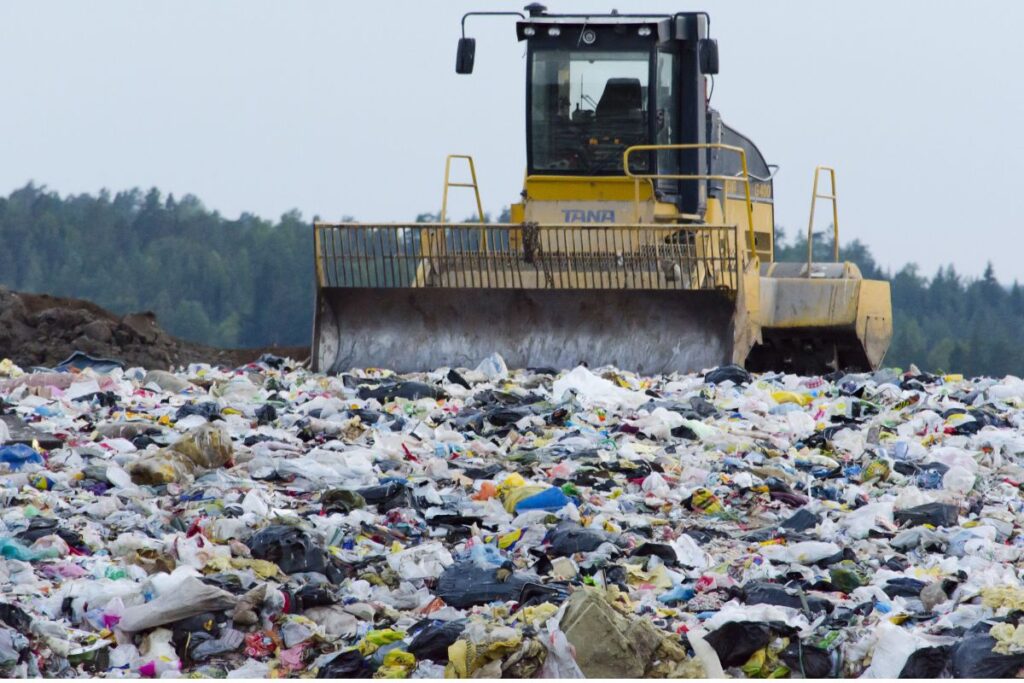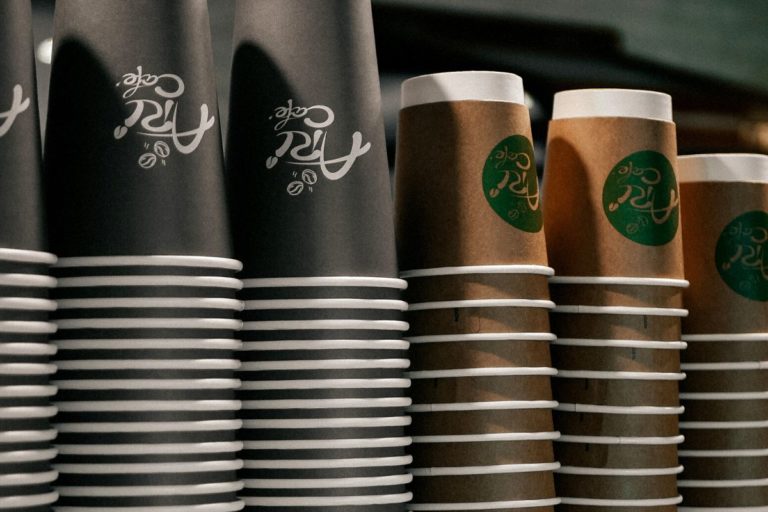Coffee and the coffee industry produce a lot of waste around the world – just think of all the coffee cups, drinking straws, and just the ridiculous amounts of plastic items that are created for coffee consumption.
So, the eye is constantly on coffee companies and what they are doing (or not doing) to minimize their environmental impact.
After all, big companies aren’t particularly known for being green, so it’s best to keep track of them.
Here are some of the most important statistics and facts regarding coffee waste and recycling – I’ll start by coffee cups and related items, then we’ll go over coffee waste:
Affiliate disclosure
This page may contain affiliate links – we may earn a small commission when you make a purchase through these links. This is at no extra cost to you.
Coffee Waste Statistics
Coffee Becomes Waste
It turns out that the coffee industry is quite wasteful – it is estimated that about 250,000 tonnes of coffee waste ends up in landfills every year.
This is actual coffee waste, meaning either the fruit itself or the bean, or both.
Less than 1% of the bean itself is used to make coffee.
4 of Our Favorites
- Breville Barista Pro – An excellent manual espresso machine for home use
- Philips 3200 Series Espresso Machine – Easy-to-use fully automatic coffee machine for small office or home use
- Rancilio Egro ONE Touch – High capacity fully automatic commercial coffee machine for professional use
- Koa Coffee – Premium hand-picked Hawaiian coffee – have you tried American coffee yet?
Ground Coffee Is The Major Culprit of Coffee Waste
When we’re done brewing our coffee, what do we do?
We discard it.
That means that all of the coffee we drink immediately becomes trash – and that’s about half a million tonnes of ground coffee that ends up in landfills every single year.
Ground coffee can, however, be recycled both on a large scale and at a small scale.
Big companies have begun to put ground coffee to use, with some experimenting with ground coffee to create a type of polymer that can then be turned into rubber-like materials.
Shoes have been made using a mixture of coffee with other materials.
At home, coffee grounds can also be recycled: they can turn into an effective deodorant for your kitchen & fridge, as well as a cheap fertilizer for your plants.
Spent coffee grounds are rich in nitrogen, a key nutrient for plants.

Coffee Leads to Contamination
When harvesting coffee, farmers need to do away with the fruit. With big harvests, the amount of fruit that is discarded can form small hills, depending on the size of the harvest.
These accumulations of waste sit under the sun for days and start to rot, attracting all sorts of pests.
Coffee farmers are usually in low-resource areas, and have to wait a long time for this waste to be taken out of their farms.
By then, the big pile of rotting fruit could bring disease, and contaminate their water and crops.
Better resources and systems put into place by the big companies who buy this coffee should be implemented soon to stop this type of problem from happening.
Coffee Cups Recycling Facts
Most Single-use Coffee Cups: Unrecyclable
Coffee cups are made of paper – so they should be recyclable and green, no? Well, not quite.
Most single-use paper cups are actually lined with a type of plastic. Otherwise, the cups wouldn’t be able to hold coffee effectively or be as durable as they are.
They are now a plastic item which can’t be recycled as easily as paper.
There are in fact plants that specialize in these types of items where they can remove this thin coating, and effectively recycle the cups.
But the amount of cups that are actually recycled this way is %1 of less.
Approximately 2.5 billion of these coffee cups are used around the world every single day.
Coffee Capsules: The Illusion of Recyclable
Coffee capsules were a hot topic in the coffee community because it is obvious that they are an unnecessary use of plastic.
The capsules themselves, single-portion and single-use are made entirely of plastic and can’t be 100% recycled.
Nespresso has addressed this in a program where they pick up your leftover capsules, yet it is unclear how much of these capsules are actually recycled. In all probability, the majority of these end up in landfills.
It was estimated that back in 2014, there were enough of these discarded coffee capsules to circle the planet 11 times.

Stirrers: When Bad For the Environment is Good for Business
Coffee shops give them out, and many people buy them for home use: plastic stirrers.
Single-use, plastic stirrers – a 1000 bag of these can cost as little as $5, making them the to-go option for all sorts of businesses that serve coffee and other such drinks, but mostly coffee.
The problem with stirrers is that, for food & drink businesses, there isn’t a better option.
These plastic stirrers are both more hygienic and accepted by the customers than actual cutlery (e.g. a spoon) and much cheaper than other options, like bamboo stirrers.
These types of plastics are completely un-recyclable, and will end up in landfills all over the world.
Photos by Madjid Atmania, Nguyen Huy and prylarer





